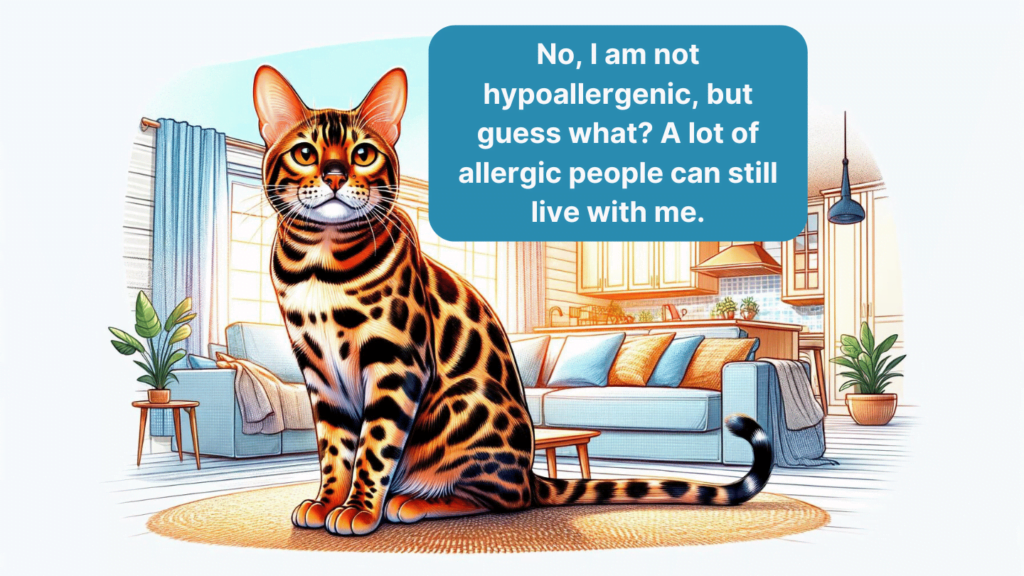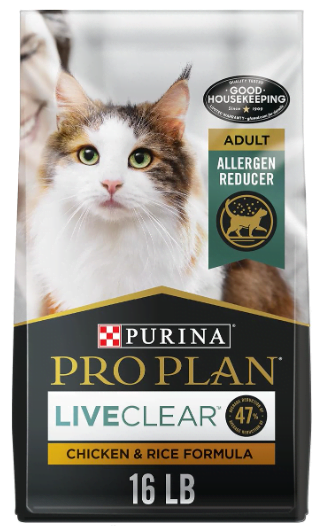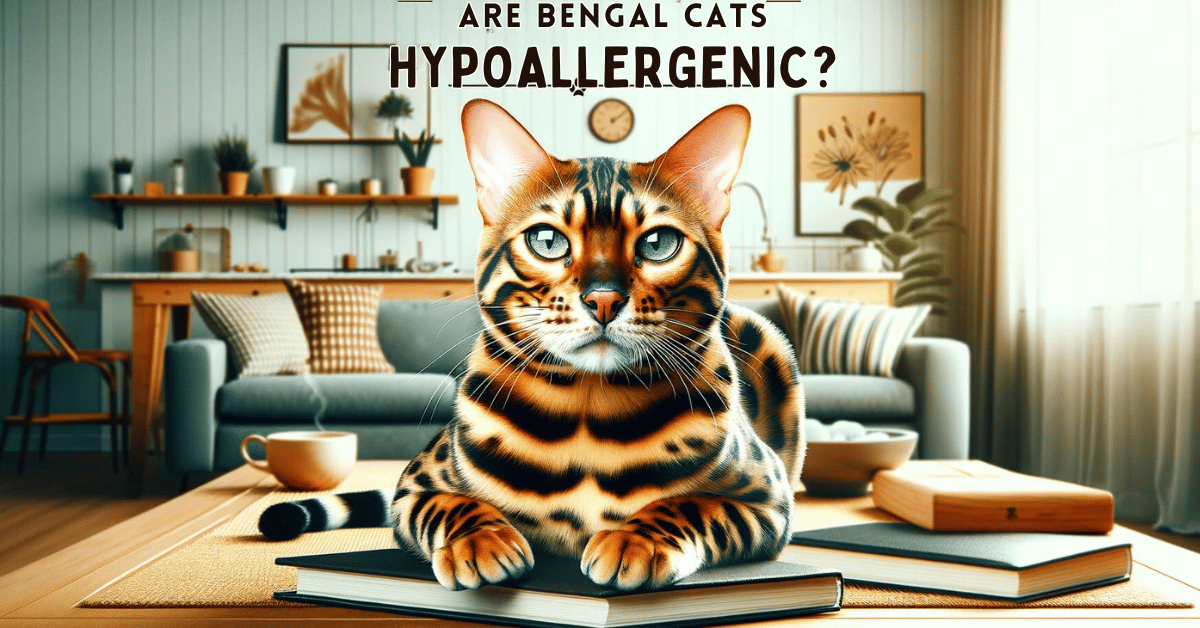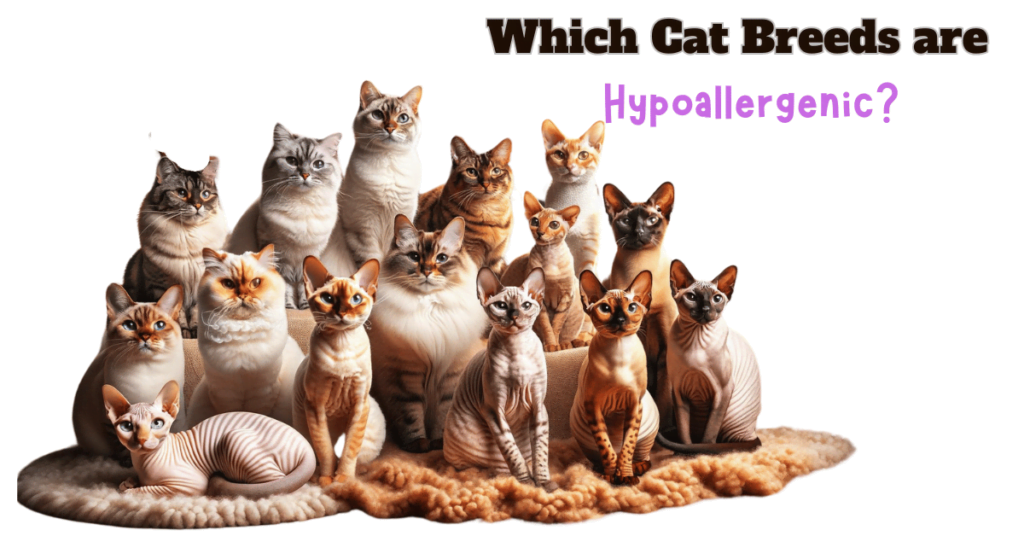This post contains affiliate links and I will be compensated if you make a purchase after clicking on my links.
Are Bengal Cats Hypoallergenic? The Myth and the Reality
Bengal cats are a striking and popular breed, known for their wild, leopard-like appearance and playful nature. But when it comes to allergies, there’s a common question: Are Bengal cats hypoallergenic?
No, Bengal cats are not hypoallergenic. Sorry to break it to you, but no breed is truly hypoallergenic. However, someone who is mildly allergic might tolerate a Bengal cat better than other breeds. In this post, we will discuss why this might be the case and explore more about Bengal cats and how they may affect allergies.

Understanding Cat Allergies
The Culprit: Fel d 1 Protein
Cat allergies are primarily triggered by a protein called Fel d 1, found in a cat’s skin cells, saliva, urine, and sebaceous glands. When cats groom themselves, this protein is deposited onto their fur and skin. As the fur and skin flakes off, Fel d 1 becomes airborne, causing allergic reactions in sensitive individuals.
The Fel d 1 protein gets spread throughout the environment as cats groom, use the litter box, and curl up on furniture. This dander, combined with fur and hair, can trap other allergens like pollen, mold, and dust. However, it is the saliva-derived Fel d 1 protein that directly triggers the allergic response.
How Fel d 1 Affects Allergy Sufferers

For those with cat allergies, exposure to Fel d 1 can lead to a range of symptoms such as sneezing, itching, watery eyes, and even respiratory issues. The severity of these symptoms can vary significantly from person to person, depending on their sensitivity to the allergen.
Why Some People Find Bengals More Tolerable
Contrary to the belief that Bengal cats don’t produce Fel d 1, they still produce allergen-causing protein as other cats. However, despite this, many allergy sufferers find Bengals more tolerable. Here’s why:

1. Bengals Shed Less
Bengals have a sleek, short coat that sheds less fur and dander compared to other breeds. Less shedding means fewer allergens are spread around the home. This also translates to a house and wardrobe that’s mostly free of cat hair, which is a bonus for any cat owner.
2. Frequent Grooming
Bengals’ meticulous grooming habits help minimize the amount of allergen-laden saliva on their fur. Additionally, Bengals have uniquely fine pelts that require considerably less maintenance than other breeds. As a result, they don’t groom themselves as often or for as long, so their fur contains less allergen-rich saliva.
3. Hybrid Background (Anecdotal)
There’s a belief, although not scientifically proven, that Bengals’ hybrid ancestry (a cross between domestic cats and Asian leopard cats) may contribute to their lower allergen production. This hybridization is thought to play a role in their unique fur properties and reduced allergen levels.
Note: There is natural genetic variation in Fel d 1 production among all cats, including Bengals. This means some Bengals might produce slightly less Fel d 1, which can contribute to their being more tolerable for allergy sufferers.
Tips for Allergy Sufferers with Bengal Cats
If you’re an allergy sufferer considering a Bengal cat, here are some comprehensive tips to help manage your allergies:
Regular Cleaning Routines
- Washing Bedding: Wash your Bengal’s bedding and toys frequently to remove allergens. This helps keep their sleeping area clean and reduces the spread of Fel d 1.
- Furniture and Clothes: Brush your Bengal cat once a week to collect any loose fur and keep it from attaching to your furniture and clothes. Doing this outside can help limit the spread of fur in your home.
Grooming Tips for Bengal Cats
- Regular Brushing: Brush your Bengal regularly to remove loose fur and dander. This can help minimize the spread of allergens.
- Bathing: Occasionally bathing your Bengal can help reduce the amount of allergen-laden saliva and dander on their fur. This keeps allergens to a minimum and helps maintain a cleaner home environment.
- Paw Care: Clean your cat’s paws regularly, especially if they roam outdoors, to reduce the spread of allergens and dirt inside your home.
Using Air Purifiers and Ventilation
- HEPA Air Purifiers: Invest in HEPA air purifiers to filter out allergens from the air. Place them in areas where your Bengal spends the most time.

- Ventilation: Ensure your home is well-ventilated to reduce the concentration of allergens. Open windows when possible and use exhaust fans to keep the air fresh.
Reducing Allergens in the Home
- Hypoallergenic Litterbox: Use a hypoallergenic litter to minimize dust and allergen spread. Regularly clean the litterbox to reduce airborne allergens.
- Restricted Areas: Keep your Bengal off kitchen counters and your pillows. Even better, keep them out of your bedroom altogether to limit exposure to allergens while you sleep.
Dietary Adjustments to Reduce Allergens
- Specialized Cat Food: Consider feeding your Bengal a special diet designed to reduce allergens. Foods like “Live Clear” are formulated to neutralize the Fel d 1 protein in your cat’s saliva, which can significantly reduce the amount of allergens your cat spreads.

Considering a Bengal Cat: What to Do
Before bringing a Bengal cat into your home, it’s crucial to spend some time around the breed to see how your allergies react. Visit breeders or shelters and interact with Bengal cats to test for allergic reactions. This hands-on approach can help you gauge whether a Bengal cat is a suitable companion for you.
Are Bengal Cats Hypoallergenic: Conclusion and Insights
While Bengals might not be completely hypoallergenic, they can be a more manageable option for some allergy sufferers. The severity of allergies varies—some people experience itchy and watery eyes, while others might break out in hives.
For most mild allergies, Bengals are good to go. Just be sure to do your research and take the necessary precautions to manage your allergies effectively. Happy cat hunting!
Meet Sean, a fintech whiz with a penchant for pet purrs and blockchain buzz. After a decade of fintech feats, Sean’s tech talents leaped from ledger lines to litter lines, driven by a passion for pets and a vision for a more connected pet care community. With three critter companions as co-pilots, Sean launched this blog to share a treasury of pet-friendly tech tips and tales.





